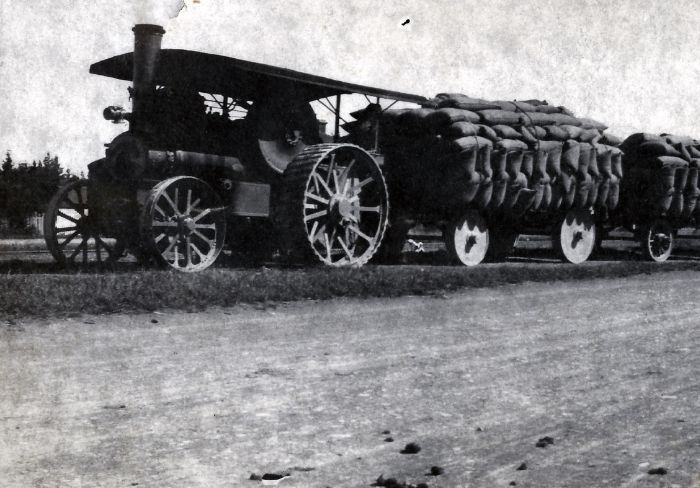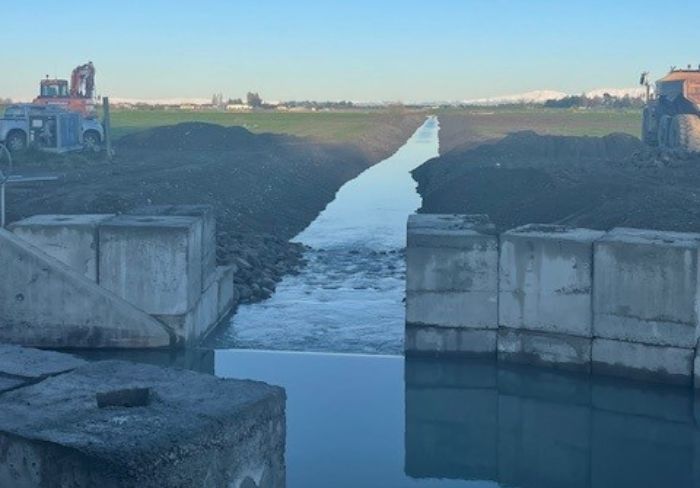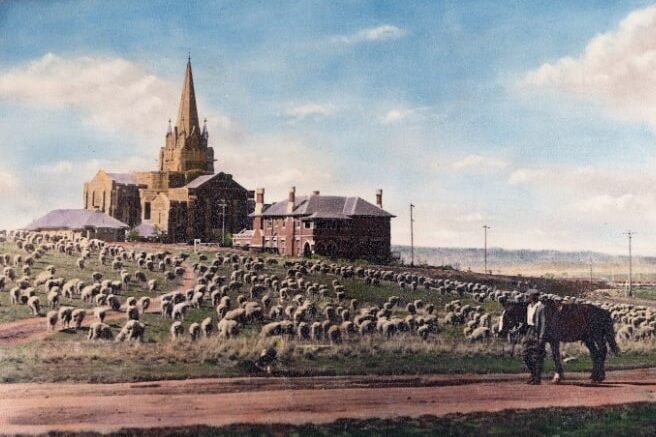When gargantuan steam-powered traction engines that could drive threshing mills and pull heavy loads across wide, flat paddocks were introduced in Aotearoa New Zealand in the 1880s, the Waitaha Canterbury Plains seemed to be the perfect place to utilise them to their fullest extent. It was a common sight to see these machines on country roads, pulling a ‘train’ which might consist of a threshing machine, a caravan and a water cart from farm to farm.
Later in their history they often hauled bales of wool, sacks of grain, and sometimes stock was transported in trucks pulled by the engines. The photograph on this page for example shows an engine carting cocksfoot, a type of pasture grass that is resistant to many pests and suitable for the dry conditions of the Whakatere Ashburton area. A portable cookhouse or sleeping hut (colloquially known as a ‘stinky’) can be seen also in tow at the back of the train.
Roads pushed to their limit
The advent of these humungous megaliths on the developing road networks of Mid Canterbury created mayhem. The new technology quickly proved to outpace infrastructure, and local bodies had to scramble to ensure safety and resilience was upheld.
Culverts had been constructed to bear a load of four to six tonnes, so the eight to ten tonne weight of a traction engine posed a significant hazard. Most road boards in the area refused to take responsibility for any accident or damage which occurred to the vehicles or their drivers while using the culverts.
A one mile an hour speed limit was enforced on the Ashburton bridge, following what was described by the County Council as “reckless driving” on the part of engine drivers. The means of transport was banned completely from some smaller bridges.
Traction engines were blamed for the dangerous/unsafe state of roading, especially following rain. In time, by-laws were developed to keep the vehicles off sealed roads, with alternative roading provided by the Main Highways Board. The installation of spark arrestors on engines was encouraged to limit the risk of fire in dry conditions, and the throwing out of hot ashes from an engine after driving was discouraged for the same reason.
An attempt to mitigate the challenge of maintaining the roads due to the use of the heavy machines was debated during the 1920s. The Public Works Department declared it was incumbent on traction engine owners to pay a heavy traffic fee if their local bodies had a by-law, as well as the fee for registration and licensing. Many owners did not appreciate this imposition, particularly those whose vehicles were off-road only.
By the 1930s tractors were replacing their steam powered predecessors. The once-cutting edge marvels of mechanical technology became a novelty to be enjoyed at local events, where their distinctive mechanism accompanied by much steam-powered snorting and hissing was, and still is, much admired by generations of Ashburtonians.
By Jacqueline Paterson




